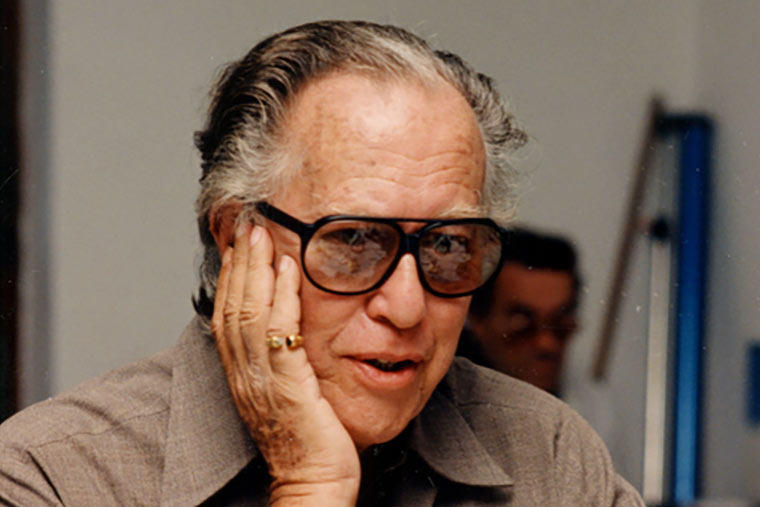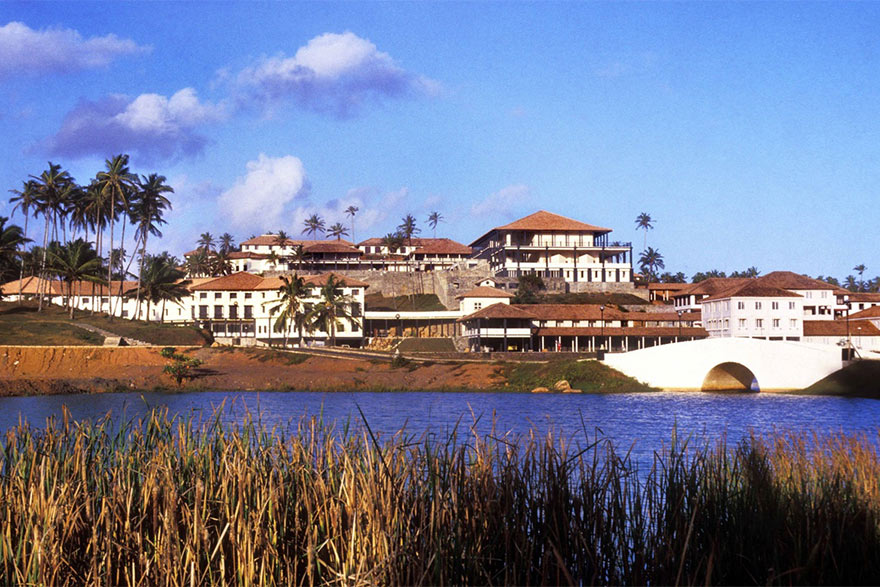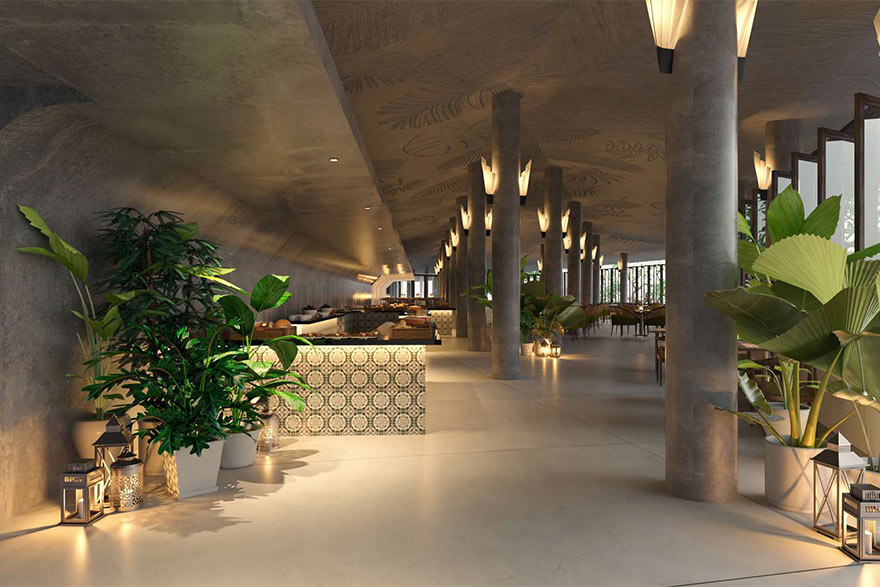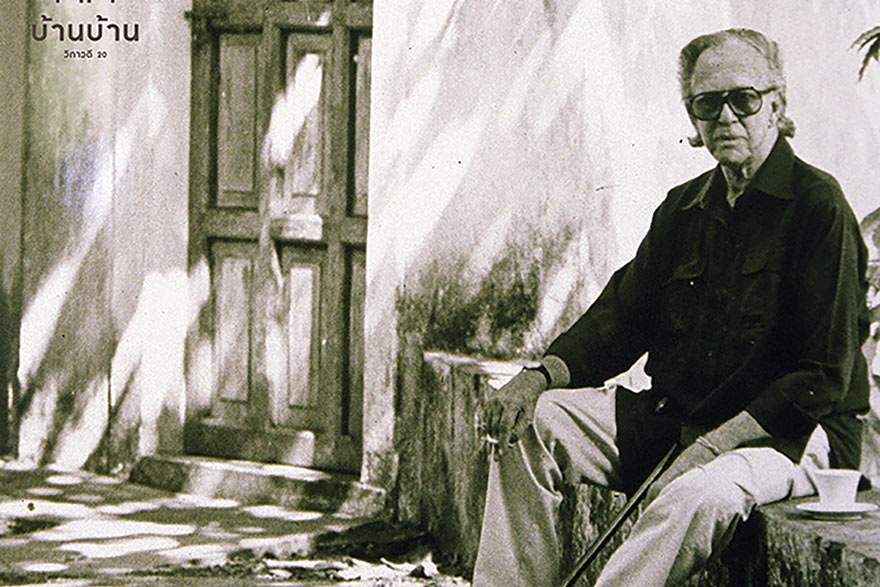When the late Geoffrey Manning Bawa entered the world of architecture, he made his mark with every design he produced. Exploring modernism and its cultural implications, he created unique designs that were recognized by architects across the world. The result of these works made him the principal force behind the global concept of “tropical modernism”. As Sri Lanka’s most influential architect, Sir Bawa built houses, hotels, schools, offices and government buildings including the Sri Lankan Parliament Building
The Sri Lankan Architect Geoffrey Bawa is now regarded as having been one of the most important and influential Asian architects of the 20thcentury. Bawa came to architecture late, only qualifying at the age of thirty-eight in 1957, but he soon established himself as Sri Lanka’s most prolific and inventive architect, establishing a whole canon of prototypes for buildings in a Tropical Asian Context. Although best known for his private houses and hotels, his oeuvre also includes schools and universities, factories and offices, public buildings as well as the new Sri Lankan Parliament.
Bawa’s work is characterized by sensitivity to site and context. His work is instinctively, rather than self-consciously, sustainable. His designs break the barriers between inside and outside, between buildings and landscape, and he characteristically links a complex series of spaces – rooms, courtyards, loggias, verandahs – with distant vistas in a single scenographic composition.

Bawa was born in 1919 in what was then the British colony of Ceylon. His father was a wealthy and successful lawyer of Muslim and English parentage, while his mother was of mixed German, Scottish and Sinhalese descent. In 1938 he went to Cambridge to read English, before studying Law in London, where he was called to the Bar in 1944. After World War II he joined a Colombo law firm, but he soon tired of the legal profession and in 1946 set off on two years of travel that took him through the far East, across the United States and finally to Europe. In Italy he toyed with the idea of settling down permanently and resolved to buy a villa overlooking Lake Garda. He was now twenty-eight and had spent one-third of his life away from Ceylon.
Bawa’s work is characterized by sensitivity to site and context. His work is instinctively, rather than self-consciously, sustainable. His designs break the barriers between inside and outside, between buildings and landscape, and he characteristically links a complex series of spaces
Not only had he become more and more European in outlook, but his ties to Ceylon were also weakening: both his parents were dead and he had disposed of the last of his Colombo property. The plan to buy an Italian villa came to nothing however, and in 1948 he returned to Ceylon where he bought an abandoned rubber estate at Lunuganga, on the south-west coast between Colombo and Galle. His dream was to create an Italian garden from a tropical wilderness, but he soon found that his ideas were compromised by lack of technical knowledge. In 1951 he was apprenticed to H. H. Reid, the sole surviving partner of the Colombo architectural practice of Edwards, Reid and Begg. When Reid died suddenly a year later Bawa returned to England and, after spending a year at Cambridge, enrolled as a student at the Architectural Association in London.

Bawa finally qualified as an architect in 1957 at the age of thirty-eight and returned to Ceylon to take over what was left of Reid’s practice. He gathered together a group of talented young designers and artists who shared his growing interest in Ceylon’s forgotten architectural heritage and his ambition to develop new ways of making and building.
One of Bawa’s most impressive achievements has been the Garden at Lunuganga, which he has slowly fashioned for himself from an abandoned rubber estate over a period of fifty years. The result is a series of outdoor rooms conceived with an exquisite sense of theatre as a civilized wilderness set within the greater garden of Sri Lanka. He died in 2003 and was cremated on the cinnamon hill of his Magical Garden. In 2001 Bawa received the special Chairman’s award in the eighth cycle of the Aga Khan award for architecture, becoming only the third architect to be so honored since the awards inception.
During the 1980s Bawa designed the new Ruhunu University near Matara, a project that enabled him to demonstrate his mastery of external space and the integration of buildings in a landscape. The result is a matrix of pavilions and courtyards, arranged with careful casualness and a strong sense of theatre across a pair of rocky hills
Bawa’s work was mainly in Sri Lanka, but included several other countries as well: in India, Indonesia, Mauritius, Japan, Fiji, and Singapore. His works include houses, hotels, schools, clubs, offices and government buildings, most notably the Sri Lankan Parliament Building. It is no exaggeration to say that Geoffrey Bawa transformed the look of South and South-East Asia.
One of Bawa’s earliest domestic buildings, a courtyard house built in Colombo for Ena De Silva in 1961, was the first to fuse elements of traditional Sinhalese domestic architecture with modern concepts of open planning, demonstrating that an outdoor life is viable on a tight urban plot.

The Bentota Beach Hotel of 1968 was Sri Lanka’s first purpose-built resort hotel, combining the conveniences required by demanding tourists with a sense of place and continuity that has rarely been matched. During the early 1970s a series of buildings for government departments, developed ideas for the workplace in a tropical city, culminating in the State Mortgage Bank in Colombo, hailed at the time as one of the world’s first bio-climatic high-rises.
Bawa’s growing prestige was recognized in 1979, when he was invited by President Jayawardene to design Sri Lanka’s new Parliament at Kotte, 8 kilometers east of Colombo. At Bawa’s suggestion the swampy site was dredged to create an island at the centre of a vast artificial lake, with the Parliament building appearing as an asymmetric composition of copper roofs floating above a series of terraces rising out of the water. Abstract references to traditional Sri Lankan and South Indian architecture were incorporated within a modernist framework to create a powerful image of democracy, cultural harmony, continuity and progress and a sense of gentle monumentality.
Bawa was invited by President Jayawardene to design Sri Lanka’s new Parliament at Kotte. At Bawa’s suggestion the swampy site was dredged to create an island at the centre of a vast artificial lake, with the Parliament building appearing as an asymmetric composition of copper roofs floating above a series of terraces rising out of the water
During the 1980s Bawa also designed the new Ruhunu University near Matara, a project that enabled him to demonstrate his mastery of external space and the integration of buildings in a landscape. The result is a matrix of pavilions and courtyards, arranged with careful casualness and a strong sense of theatre across a pair of rocky hills overlooking the southern ocean.
Some of these ideas came to fruition in three hotels built in Sri Lanka in the 1990s: the Kandalama, conceived as an austere jungle palace, snaking around a rocky outcrop on the edge of an ancient tank in the Dry Zone; the Lighthouse at Galle, defying the southern oceans from its boulder-strewn headland; and the Blue Water, a cool pleasure pavilion set within a sedate coconut grove on the edge of Colombo.

These projects brought Bawa international recognition and his work was celebrated in a Mimar monograph by Brian Brace Taylor and in a London exhibition. But the Parliament building and Ruhunu had left Bawa exhausted and at the end of the 1980s he withdrew from his partnership with Poologasundram and relinquished the name Edwards, Reid and Begg. He was now seventy and it was widely assumed that he would retire to Lunuganga and contemplate in his garden.
CELEBRATING AN ICON
 In celebration of the centenary of Bawa’s birth, the Geoffrey Bawa Trust and the Lunuganga Trust have planned a year-long programme of curated events. Featuring an exciting lineup of works by Amitav Ghosh, Chandragupta Thenuwara, Dayanita Singh, Dominic Sansoni, Lee Mingwei, Kengo Kuma, Sarah Sze, and many others, the programme commenced on July 2019 and will continue for an entire year, concluding in July 2020.
In celebration of the centenary of Bawa’s birth, the Geoffrey Bawa Trust and the Lunuganga Trust have planned a year-long programme of curated events. Featuring an exciting lineup of works by Amitav Ghosh, Chandragupta Thenuwara, Dayanita Singh, Dominic Sansoni, Lee Mingwei, Kengo Kuma, Sarah Sze, and many others, the programme commenced on July 2019 and will continue for an entire year, concluding in July 2020.